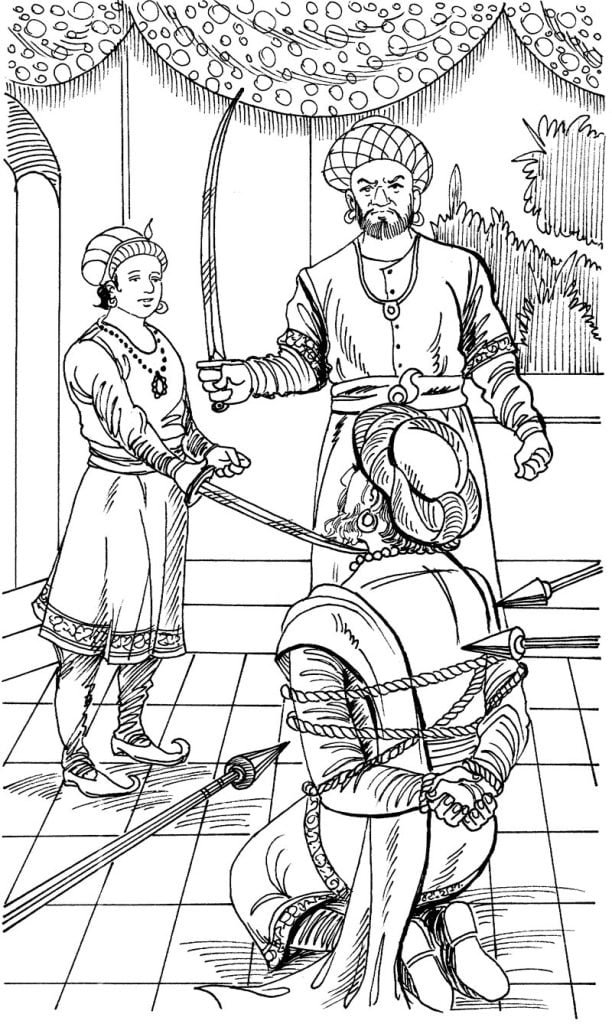After the defeat of Kamran areas under the control of Humayun gained some stability and peace. So, when Akbar showed little interest in studying books his sire decided to train him in administrative works. First, Akbar was given the charge of running the affairs of a village called Charkh, situated in south-east to Kabul.
Some time later Hindal died in a battle. His area Gazni was handed over to Akbar at the end of 1551. It was the first important administrative responsibility for Akbar. He reached Gazni accompanied by Ataka Khan and other officials. Akbar camped there for six months. He heard the problems of the locals and gathered information on administrative challenges. Then, he was called back to Kabul by his sire.
One year later Humayun opened a front against Afghans. He took Akbar alongside into the campaign. During that drive a Gakkhar Chieftain informed Humayun that Kamran was hidng in his area. The father-son duo of Humayun and Akbar dashed to the area and took Kamran prisoner.
For his activities of treason he was blinded and allowed to go to Mecca. After the incident Akbar was sent to Kabul. In 1554, Humayun appointed Muneer Khan as guardian of Akbar.
Towards India
In November, 1554 Humayun set out for India to regain his lost empire. His rule had firmly established on Kabul.
His son, Akbar was accompanying him. He was then a 12 year old lad. On February 24, 1555 Humayun entered Lahore. There he declared Akbar to be his successor.
Then, Humayun defeated the army of Sultan of Sur, Sikandar Shah at Machchhiwara and Sirhind before marching on towards Delhi with his Moghul army. On July 23, 1555 Nasiruddin Humayun entered into Delhi after 15 years. He again sat on the Delhi throne and declared Akbar to be official crown prince. Akbar got Hissar as estate of the crown prince. Four months later he was made the governor of Punjab.

Akbar set out for Punjab with a team of officials and commanders to take up the responsibility. Meanwhile the dethroned Sikandar Shah Suri was wandering about in Punjab. Akbar decided to tackle him first of all as he still could prove a danger and a thorn in Moghul flesh. With his army Akbar went to Mankot fort where Sikandar Shah was supposed to be holed in.
But he hadn’t gone too far when a disturbing news reached him. Emperor Humayun has been seriously injured as a result of a fall from a height.
News resulted in Akbar and his entourage plus armies breaking journey at Kalanaur, which is now in Pakistan.
The news was not wholly true. Humanyun was no more alive. The truth was that Humayun had fallen from the stairs of Shermandal, a building in the Old Fort on January 24, 1556 and had died three days later, on January 27.
Akbar had been confided with the truth but the death of the emperor was decided to be kept a secret until Akbar reached Delhi. Humayun being injured was a rumour being kept alive to prevent conspiracies. A person named Mulla Bakhshi used to wear the regal dress of the dead emperor and stand in the high up royal palace balcony to wave at the crowds impostoring Emperor Humayun. His physical built was similar to the late emperor. For days his charade was played for the benefit of the subjects.
So, at Kalanaur Akbar learnt that his sire was dead. The faithful Bairam Khan was there. He decided to coronate Akbar as the emperor without any delay.
In an open garden of Kalanaur he got a platform of bricks constructed in haste, got Akbar sit on it and in a very simple ceremony declared Akbar as the Emperor of Delhi.

As tradition demanded, the court held a meeting in the garden. It consisted of a small crowd of officials and commanders accompanying them. The ‘Khutba’ was read out in the name of Akbar. At the same time, Emperor Akbar announced appointments of his favourites on the various empirical posts. Tardi Beg was given the command of 5000 soldiers, (officially called Paanch Hazari) appointed administrator of Delhi and dispatched to take charge.
Who could have imagined that a 13 year old lad, declared emperor beseated on a brick platform in a desolate garden of a small village would one day grow into the most celebrated and glorified Emperor of India?

